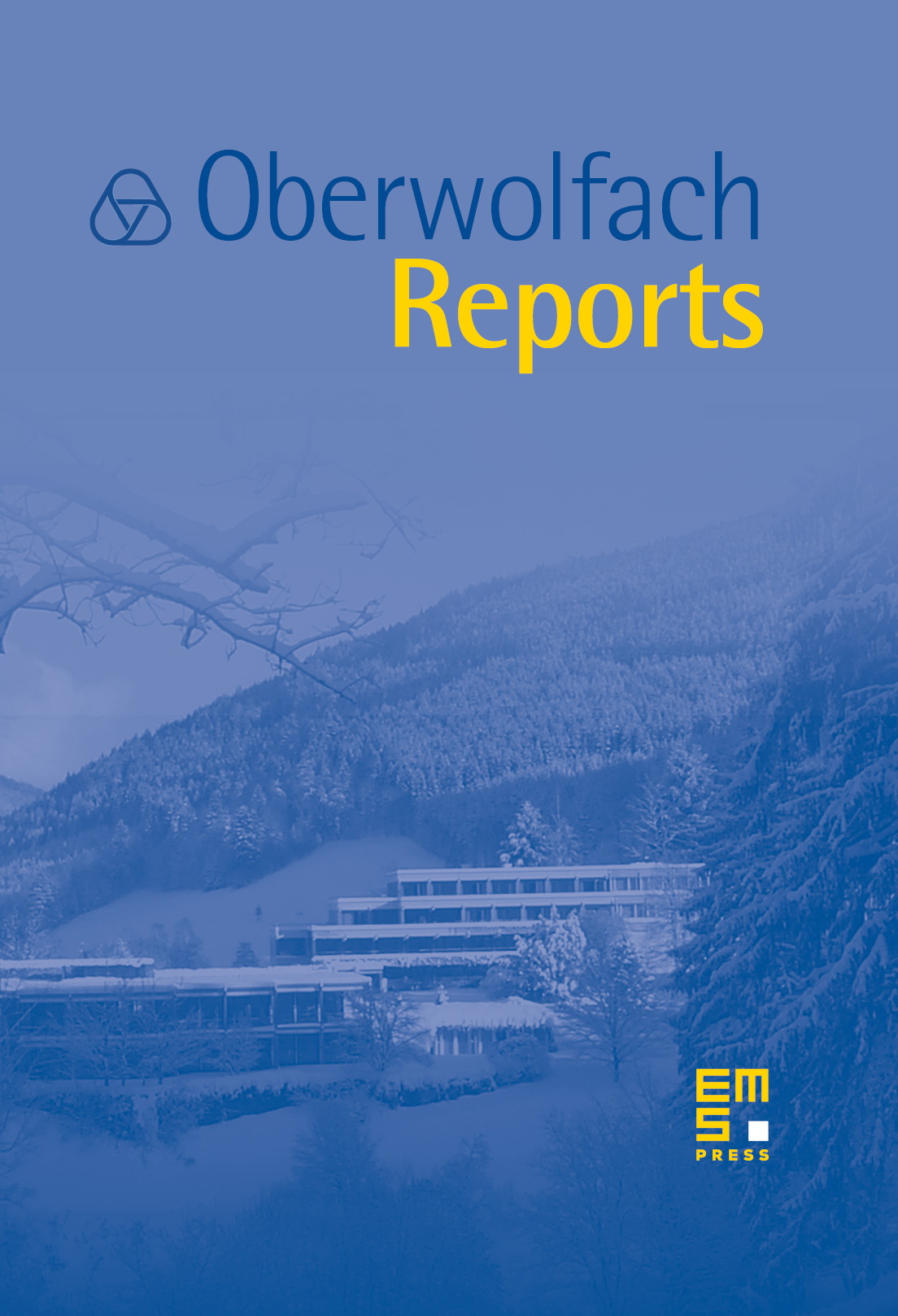Transport in Multi-Dimensional Random Schrödinger Operators
François Germinet
Université de Cergy-Pontoise, FrancePeter Müller
Ludwig-Maximilians-Universität München, GermanySimone Warzel
TU München, Garching, Germany

Abstract
This (half-size) workshop was attended by 25 participants. About fifty per cent of the attendees could be considered as “non-senior” researchers, among them also two PhD-students. The level of the workshop was high and nearly all main protagonists of the field were present. The organisers feel that the special focus and the familiar atmosphere of a small-size meeting found great appreciation among the participants.
The programme of the workshop consisted of short talks, long talks and some distinct series of lectures. The purpose of having such series – given by Michael Aizenman, Abel Klein, Leonid Pastur and Claude-Alain Pillet – was to underline important recent developments and stimulate new ideas.
Random Schrödinger operators play an important rôle in our understanding of electronic properties in disordered materials, such as random alloys, doped semiconductors or amorphous substances. It is well known from Physics that these materials exhibit a metal-insulator transition in three or more space dimensions, separating a conducting phase with a non-zero direct-current conductivity from an insulating phase where the direct-current conductivity vanishes. Furthermore, physicists argue that the conducting (resp. insulating) phase occurs, if the Fermi energy of the system falls into a region corresponding to delocalised (resp. localised) states of the quantum-mechanical energy operator. It was Anderson's achievement in 1958 – rewarded by the 1977 Nobel Prize in Physics – to have given the first heuristic evidence for the existence of both localised and delocalised states for a discrete random Schrödinger operator in three or more space dimensions. For these very reasons, random Schrödinger operators (both discrete and in the continuum) have also attracted a great deal of attention in Mathematics over the past decades with research taking place at the interface of Functional Analysis and Probability theory. Yet, our mathematical understanding of the physical picture is still unsatisfactory.
The workshop covered a broad selection of topics of current interest in the theory of random Schrödinger operators. These include absolutely continuous spectrum on tree graphs, Anderson localisation for two interacting particles in a random environment, an extension of the fractional-moment method in the continuum, persistence of Anderson localisation for models with decaying randomness, spectral properties of random band matrices, localisation and control of Sobolev norms, an extension of Minami's estimate, linear response theory for random Schrödinger operators and Mott's law for the low-temperature behaviour of conductivities. Despite a focus on truly multi-dimensional phenomena, there were also two talks on recent interesting developments related to transport in one-dimensional systems. In addition to the above, the topics of the lecture series, which are summarised very briefly in the next paragraph, received particular attention.
In his lectures, Michael Aizenman gave an overview on facts and conjectures which relate spectral types and level statistics for a variety of different models. Particular attention was directed at tree graphs, in the context of which some surprises were presented and elucidated. Abel Klein presented a concentration inequality for functions of random variables. It is the main novel ingredient in a Bourgain–Kenig-like multi-scale analysis to prove localisation at extremal energies for alloy-type random Schrödinger operators with an arbitrary single-site distribution of the random coupling constants. Electrical conductivities and higher-order density correlations in disordered materials stood in the centre of the lectures delivered by Leonid Pastur. He reviewed a multitude of their characteristic properties, which are expected or known in Physics, thus stimulating many different directions for future mathematical research. Finally, Claude-Alain Pillet presented an operator-algebraic formalism for a mathematical description of transport in quasi-free fermionic systems.
It is the organisers' great pleasure to thank the Oberwolfach institute for providing such a stimulating atmosphere and excellent research infrastructure. Both contributed to the overall success of the meeting.
Cite this article
François Germinet, Peter Müller, Simone Warzel, Transport in Multi-Dimensional Random Schrödinger Operators. Oberwolfach Rep. 4 (2007), no. 1, pp. 667–708
DOI 10.4171/OWR/2007/12